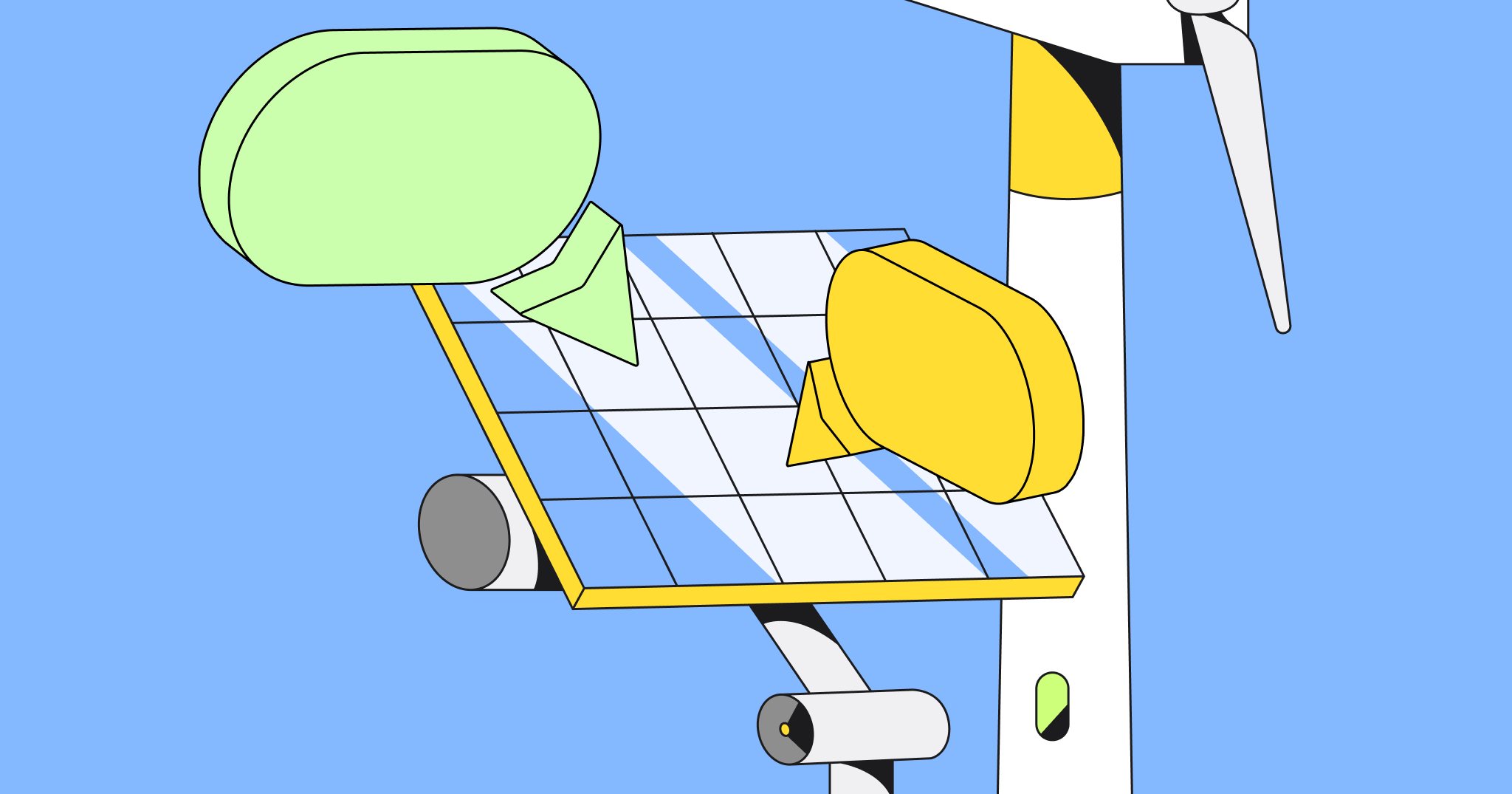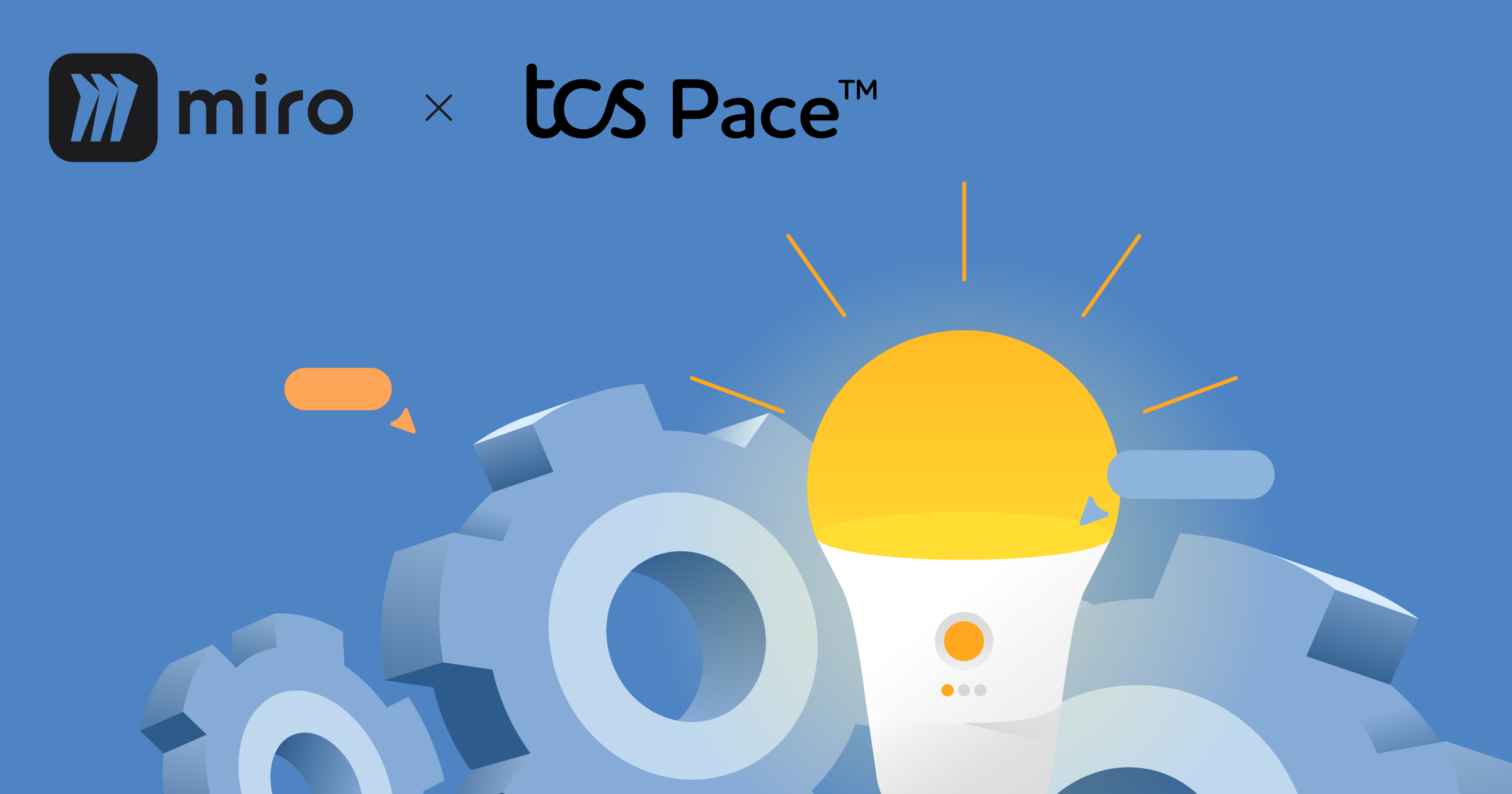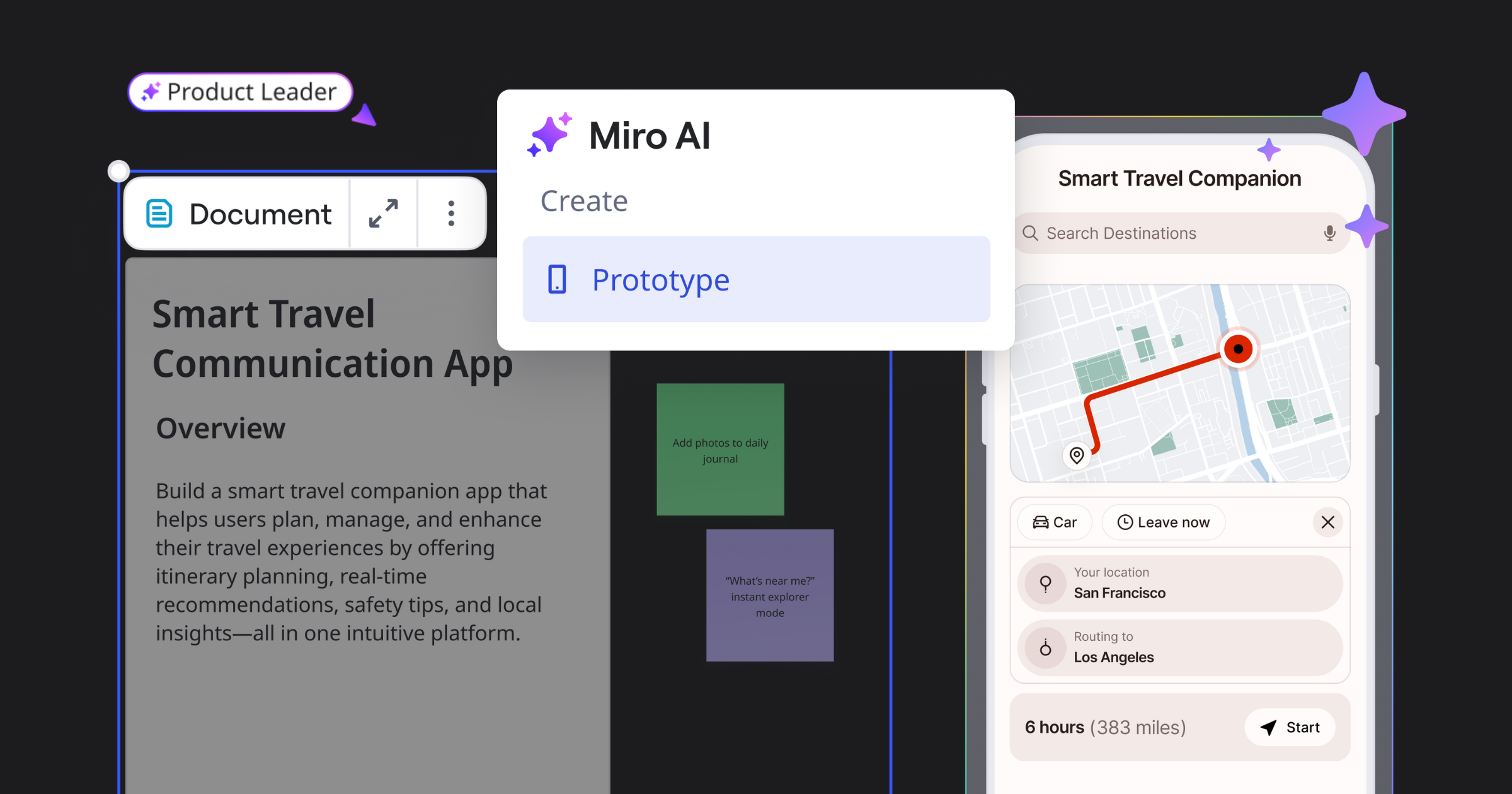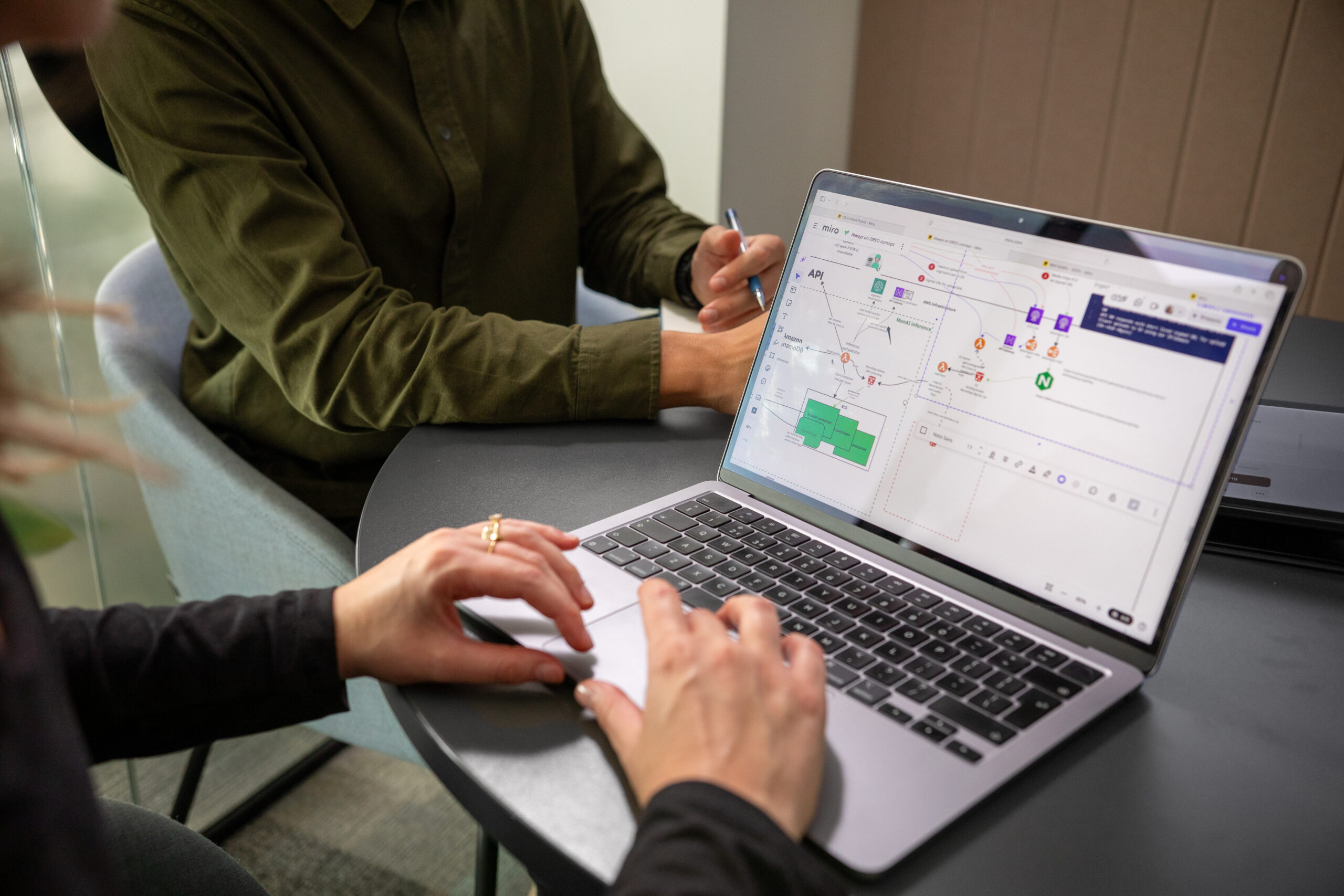Imagine building a house with a fully remote team. It may seem impossible, but it’s not — as long as you have the right tools. The same goes for the app development process. And at Intch, we believe Miro is the essential piece that brings us all together to develop our AI-powered business networking app.
Building our product is a cross-functional process that involves a diverse, globally-distributed team. Developers, designers, and marketers all use their own unique sets of tools to do their jobs. But Miro’s the one place where we all go to collaborate, create, discuss, and prototype.
In this article, we’ll show you why and how Miro changed the game for us, and share our big learnings from the early app development process. Want to know why Miro became the backbone tool for Intch? Keep reading to learn more.
Visualize: Collecting and analyzing user research
The core of Intch is content created by users. People post their requests to get business advice or introductions from others, and the clearer the request, the more replies they get. An Intch request is actually like a mini presentation that helps people meet and collaborate.
In 2020, when we started, we understood that no one likes to read long blocks of text.
Explore Miro for product development
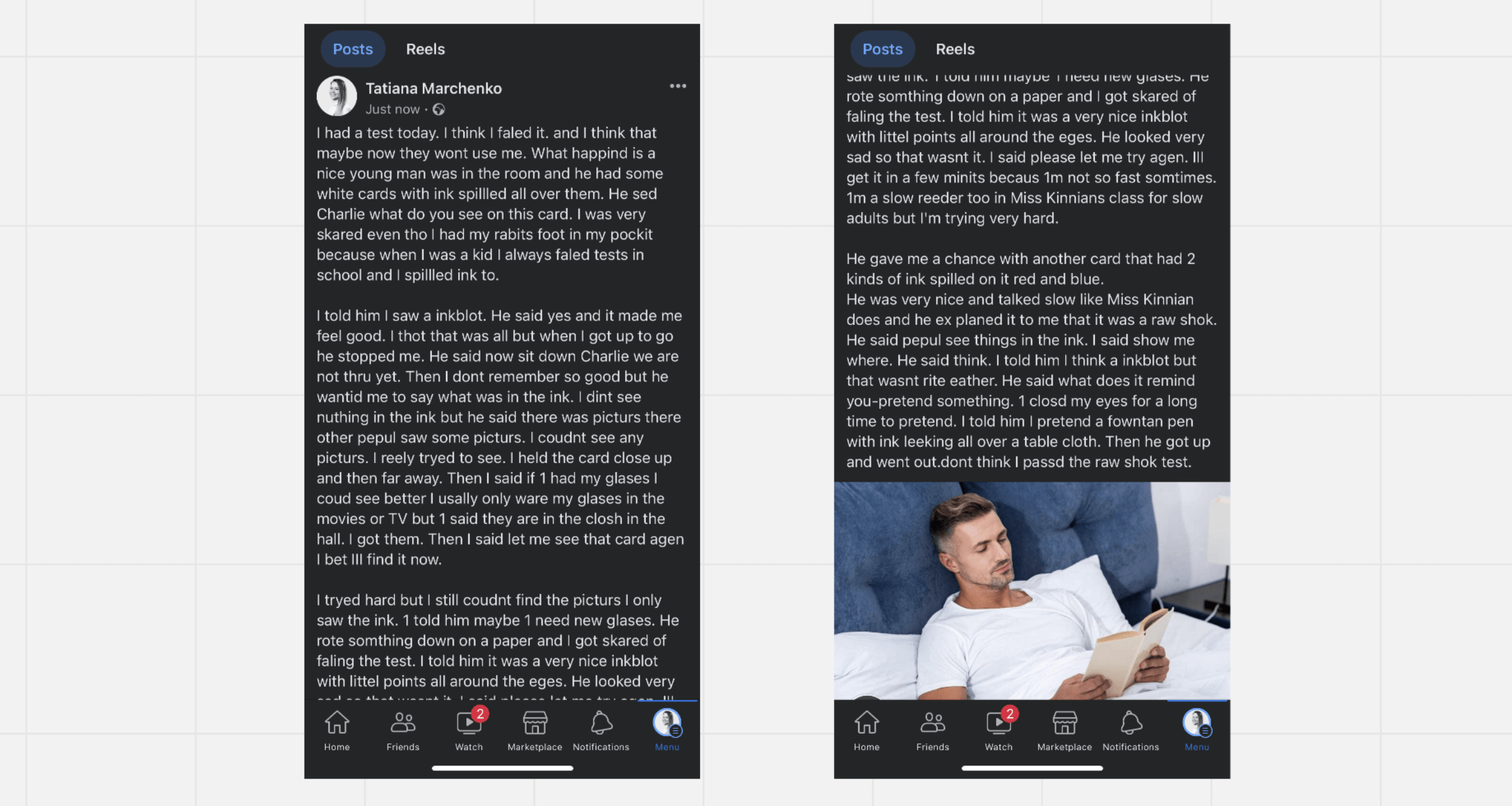
That is why our initial requests were brief and similar to Twitter.

But short requests weren’t engaging and didn’t provide enough information. Striving to find the perfect balance between “short” and “detailed,” we held more and more user research interviews and collected the data in a spreadsheet. Very quickly, we faced the same problem: too much text was really exhausting to work with.
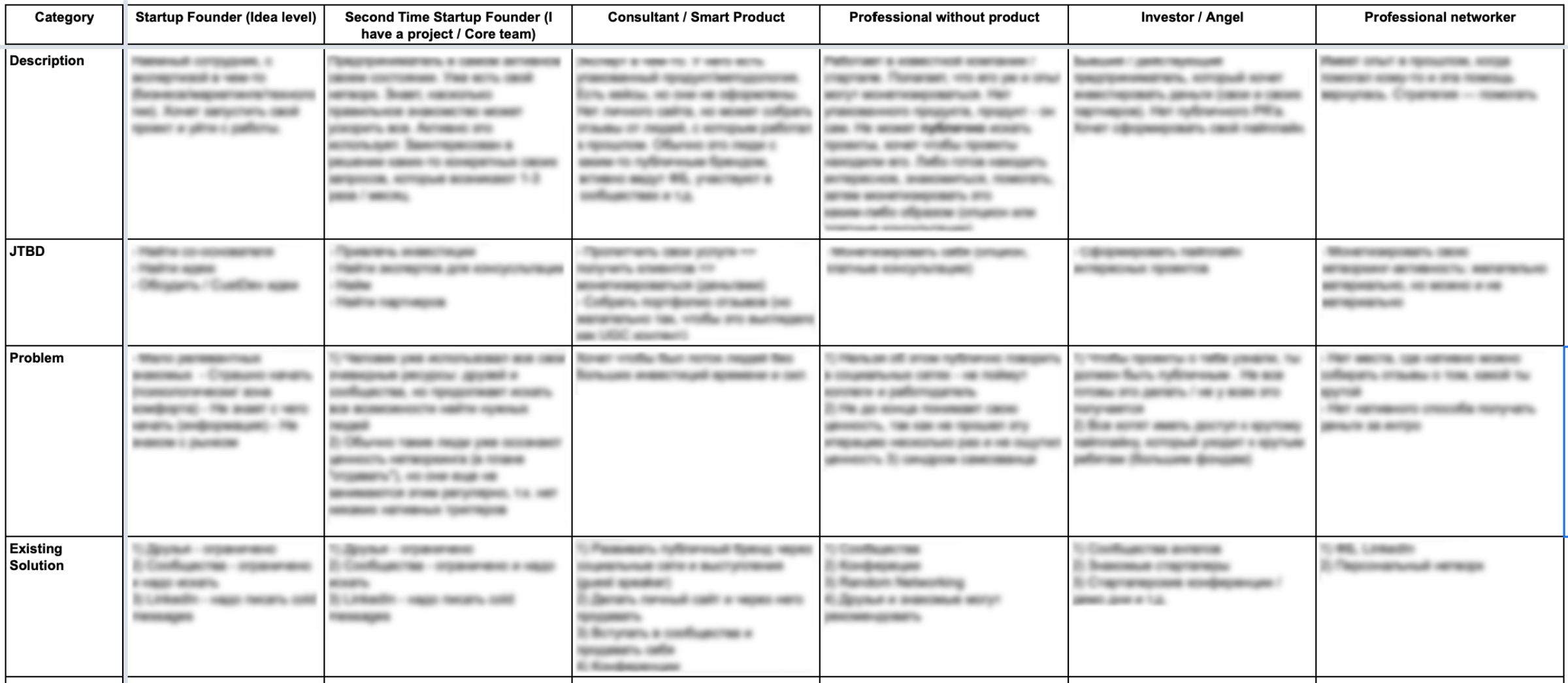
We needed simple and structured visualization, and Miro turned out to be the perfect platform for it.
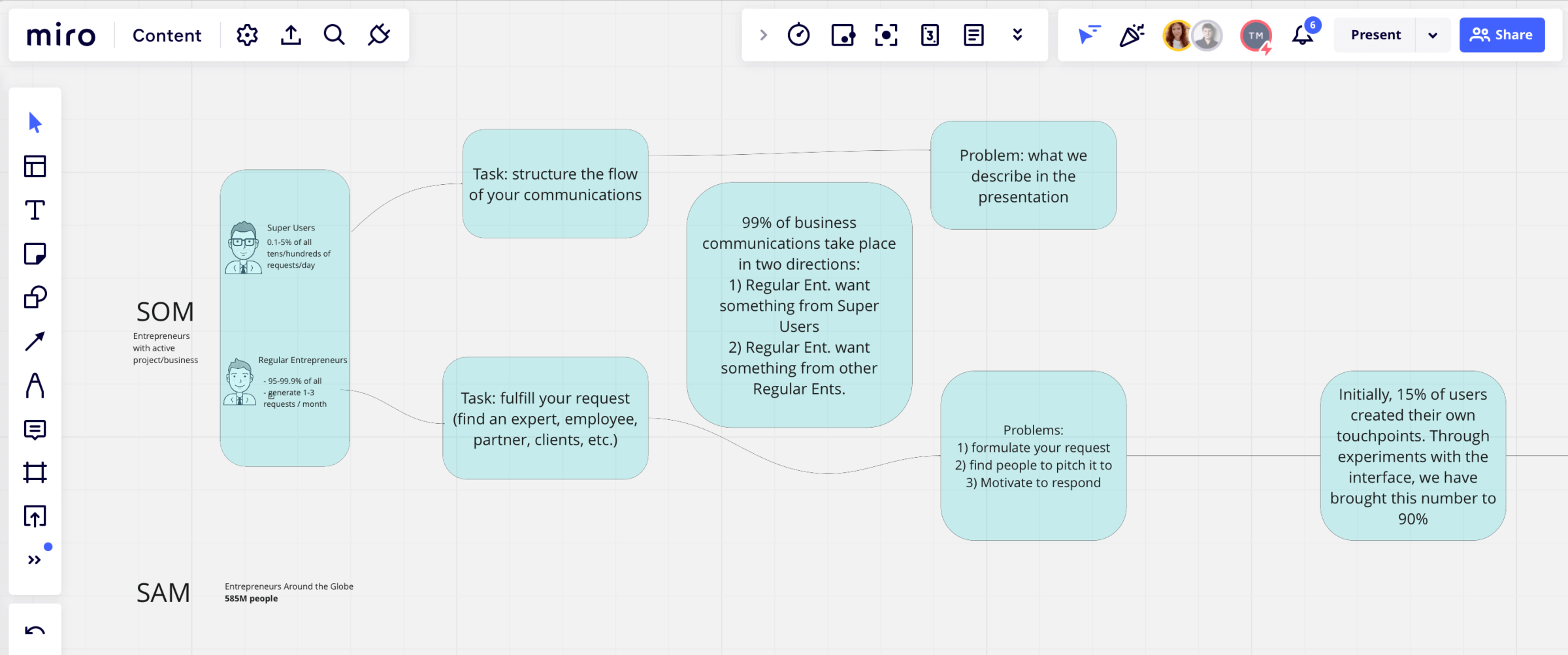
We segmented our users, defined their jobs to be done (JTBDs), and created a content framework to make the process of creating requests effortless and fun. As a result, we have developed a unique Intch request interface that allows users to create structured content based on predefined templates.

By the way, our requests today look the same; we have improved them a bit over time by adding videos and new ways to reply.
Visualizing our thoughts in Miro helped us test many hypotheses, so today people can easily create their own requests and respond to others.

We collected all the ideas for improving the content in the app from users and research in a row. At some point, we realized that the board was getting too long, and there were a bunch of ideas inside the content to create related features. So, we moved not from left to right, but from top to bottom, from low-hanging fruit like reminders in chats to more complex features like AI-assisted collections of requests.
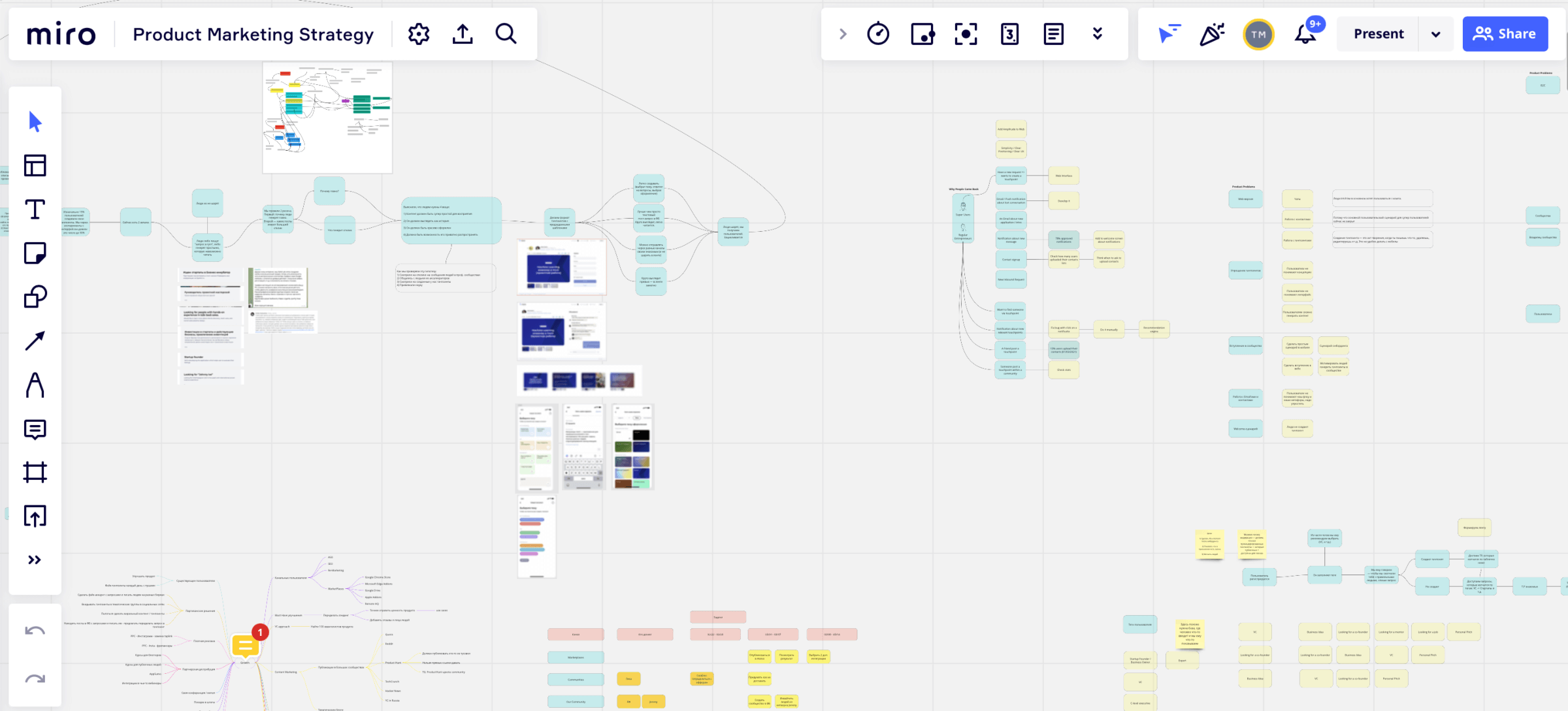
Plan: Helicopter view of tasks
Our product development team uses sprints to schedule tasks for the week in Trello. Each team has its own task board, which works well for planning and getting things done, but a task board is still just a collection of cards.
As in any company, we divide large tasks into subtasks. This is how the result is achieved step by step. But to see how these subtasks are interconnected, you definitely need the visualization provided by Miro. This makes it easier for teams to interact, avoid unnecessary work, and see the stages of completion of subtasks.
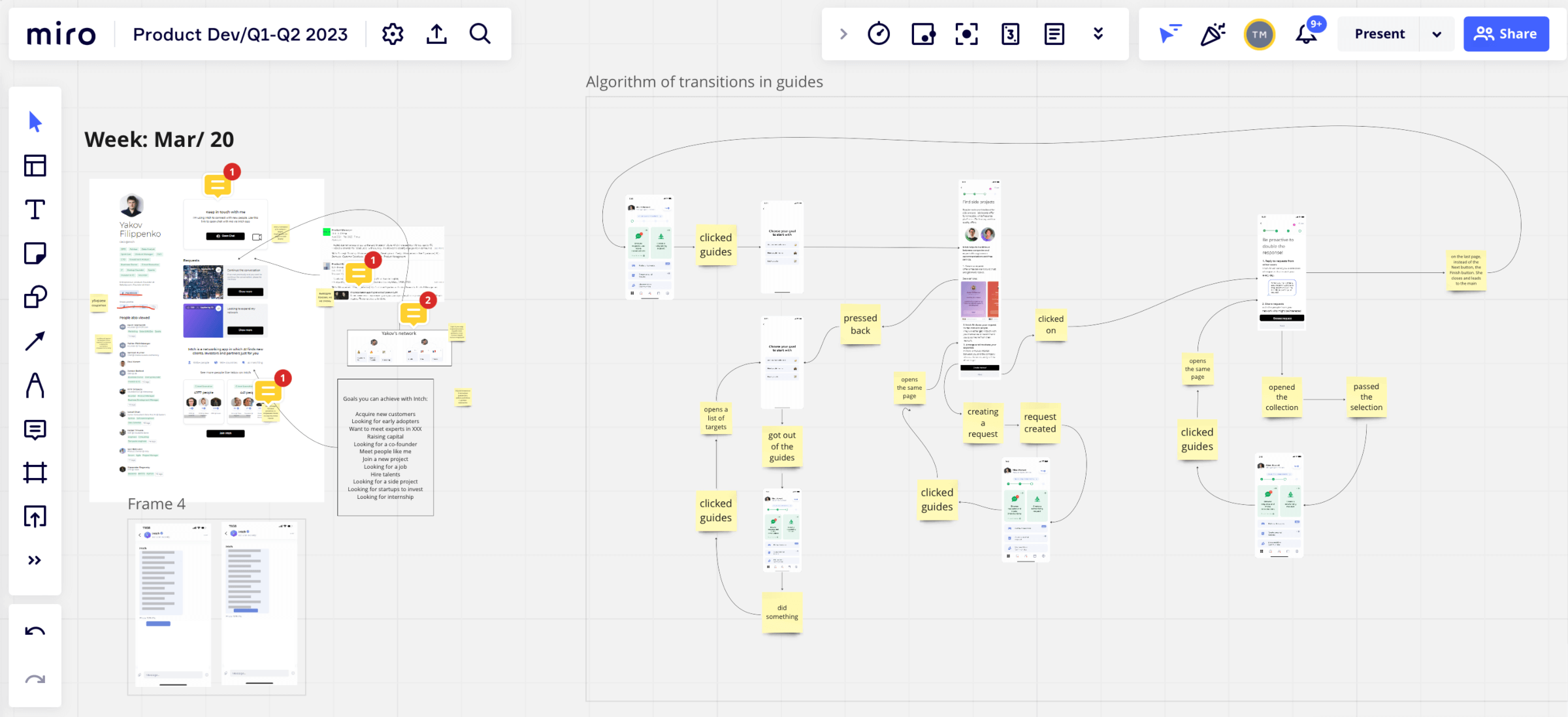
Visualization of tasks and using color-coded sticky notes has helped us identify the milestones of product growth: acquisition, onboarding, retention, and virality. We can highlight where to move in the next week or month right on the Miro board.
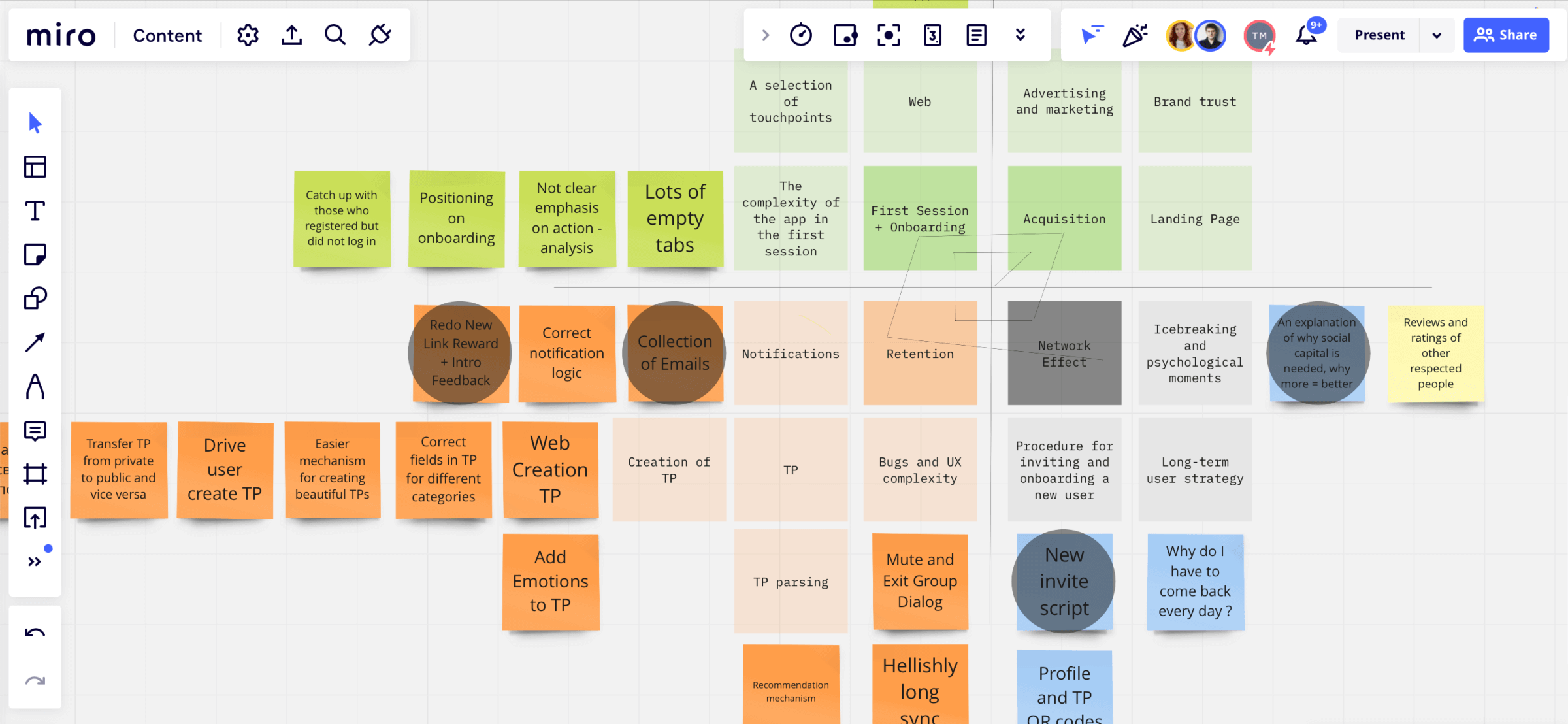
Miro’s boards and tools help keep me from getting bored with my weekly tasks. As a Product Manager, I have to create and test many hypotheses on a weekly basis. I have to scale the best and ruthlessly remove what doesn’t pass validation. Miro stores information about all the successes and failures.
Rudolf Kolovertnov, Product Manager at Intch
Collaborate: Brainstorming in shared online workspace
Building a social app is not just coding and prototyping; we are constantly evaluating our product’s problems, generating hypotheses, and testing them. A classic brainstorm would take a team gathered in a conference room, a whiteboard, a bunch of markers and a coffee machine. Let’s be honest, even gathering a team in one place, at one time and in a good mood is a rather difficult task – and could be exclusionary for team members who couldn’t attend in person. Plus, it was a big task to transcribe in-person discussions to documented, actionable tasks.
But as a remote team, we have video calls and Miro instead, which is more convenient and inclusive. A board is available to everyone and there is no need to wait in line to write something with a marker. Ideas are written down by a person on a virtual whiteboard, which means you won’t lose a single valuable thought!
The virtual communication toolbox is much more than just markers: you can create a kanban canvas to understand the importance of a task, mock up a prototype using pre-drawn shapes, add an app screenshot and much more.
A virtual brainstorm in Miro saves time, unlike real-time meetings. You can drink coffee with a colleague outside of work.
The screenshot below is one of the examples of our team’s brainstorms.
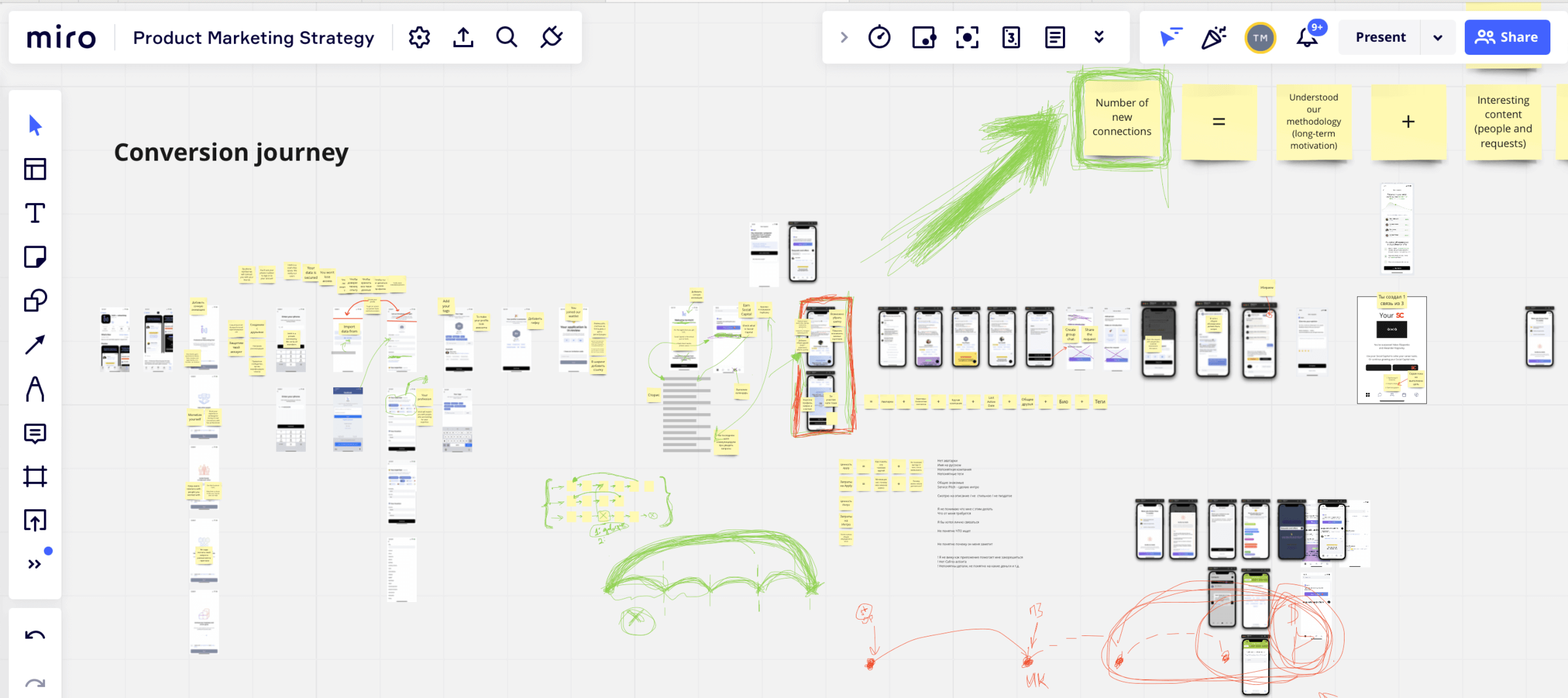
The process is a lot like a game, where each team is responsible for its part and can create and move objects, leave comments, vote for priorities, and much more.
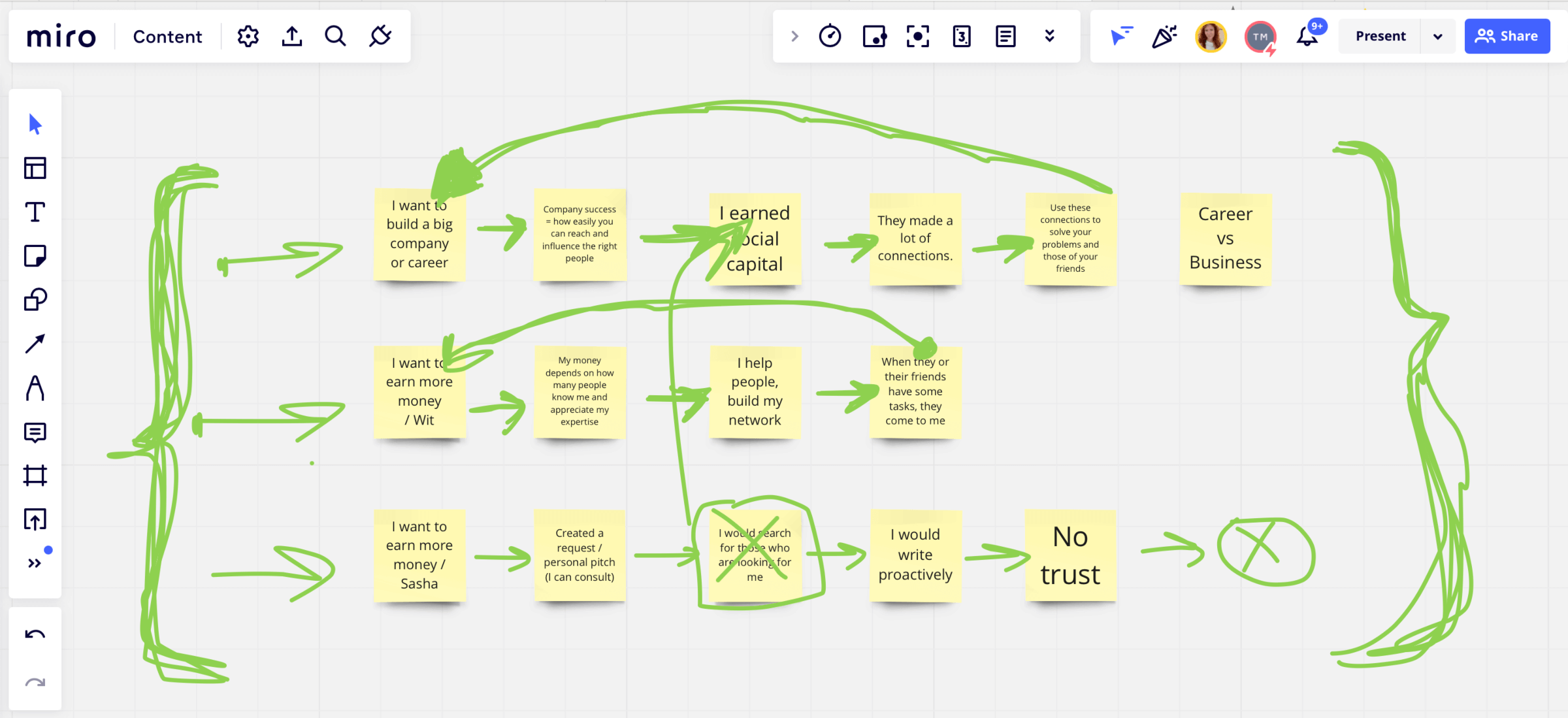
Our working tool for communication is Slack, but gradually communication moved to Miro because here we can leave comments on specific pictures or even words and see what hot discussions are boiling.
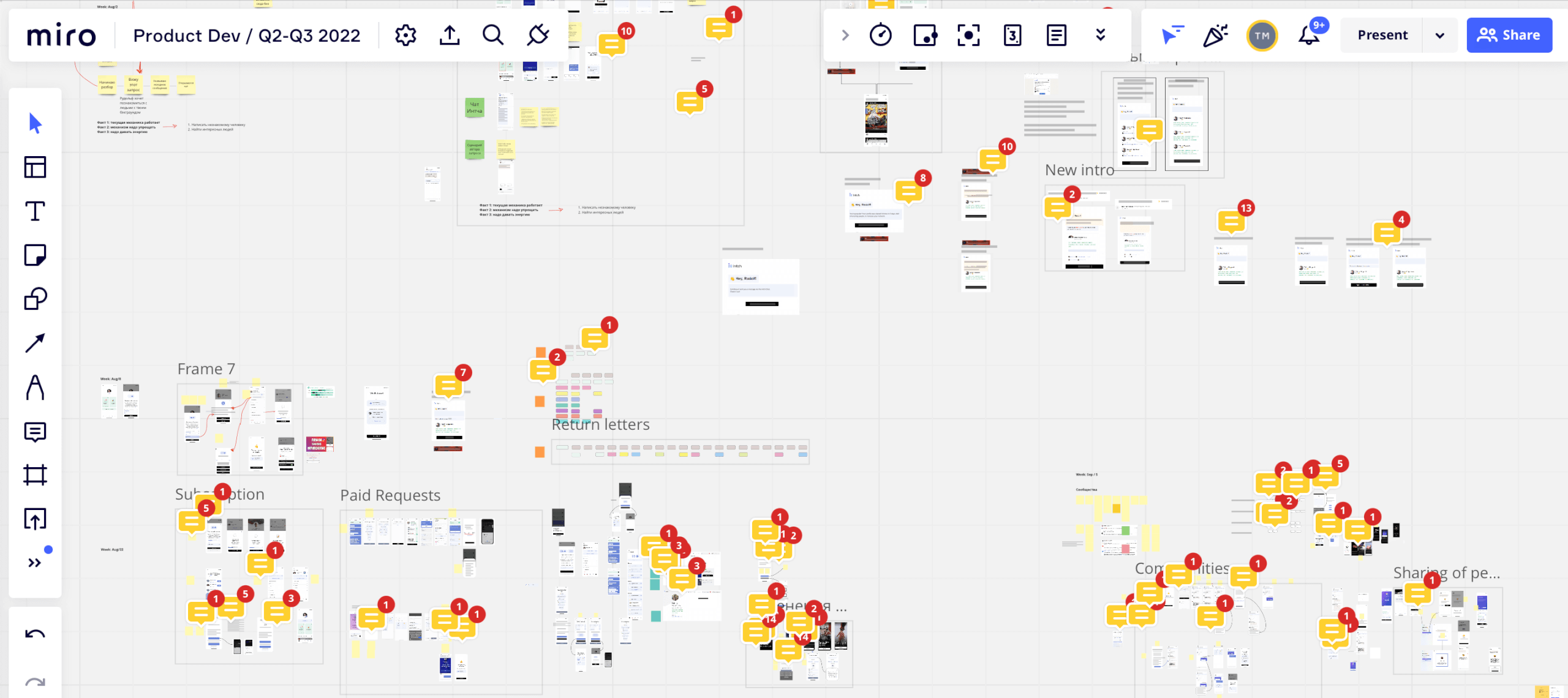
Keep track of changes: The Intch development book
In Miro, we have historical documentation to show us what the first versions of the product looked like, and we often return to the board to improve hypotheses that were implemented a year or two ago.
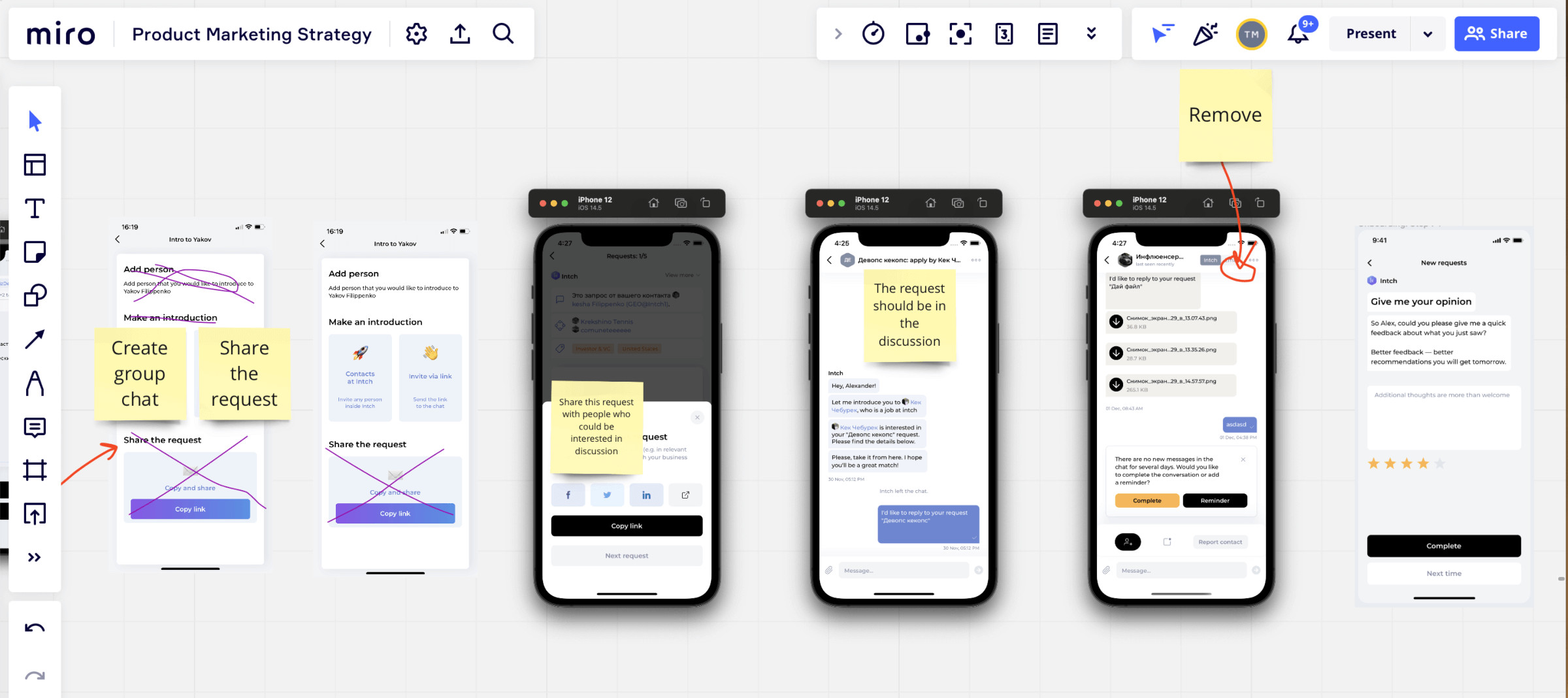

In a product, development moves in a spiral. For example, right now we are working on the development of user onboarding (the first screens a person sees after downloading the app) and we can roll back to all versions conveniently assembled in Miro.
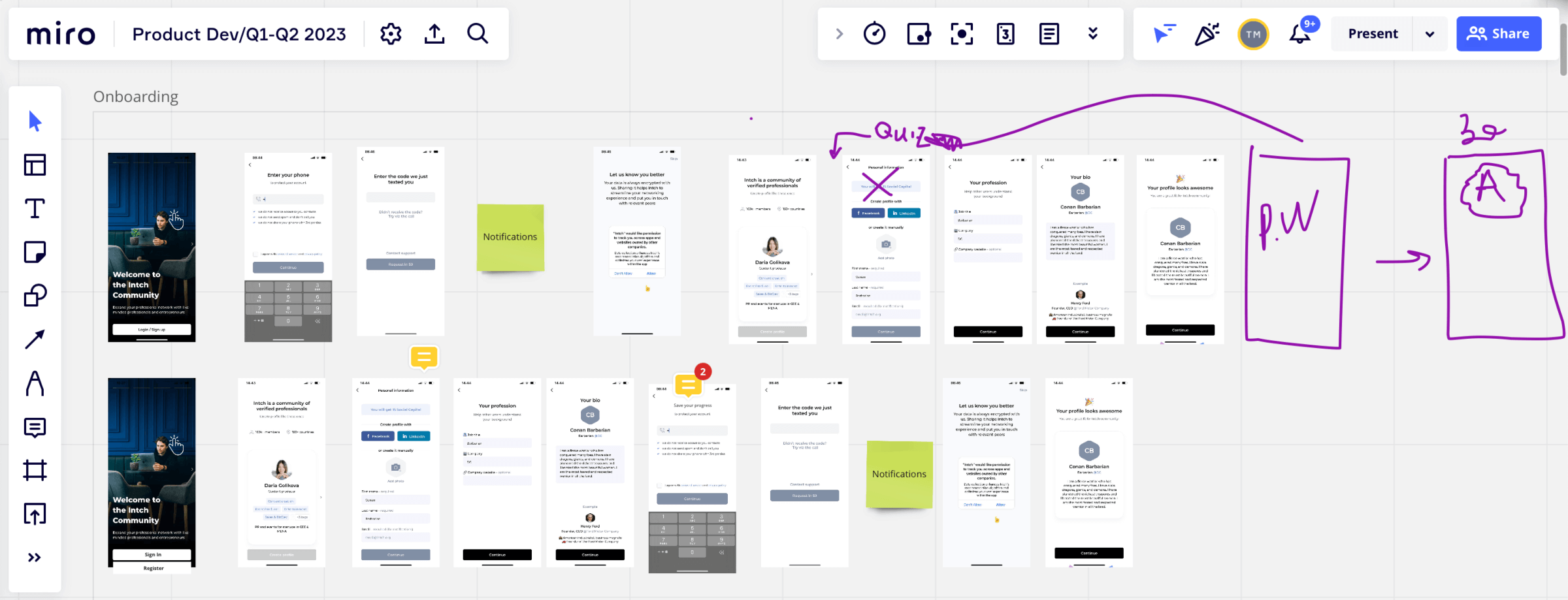

When we become a billion-dollar company, we will have a ‘book’ in Miro that tells the story of how our product has evolved. I am enjoying it immensely and hope to revisit it someday.
Yakov Filippenko, CEO at Intch
The Miro archive also helps with onboarding new team members, making it easier for them to adapt with all the necessary information collected by the team in Miro boards.
We keep the entire Intch story in Miro, allowing us to trace the development path and how everything has changed in the product. Miro is our metaverse; everyone who works inside and outside of Intch meets here and collaborates to ideate, build, ship, and tweak our products.

